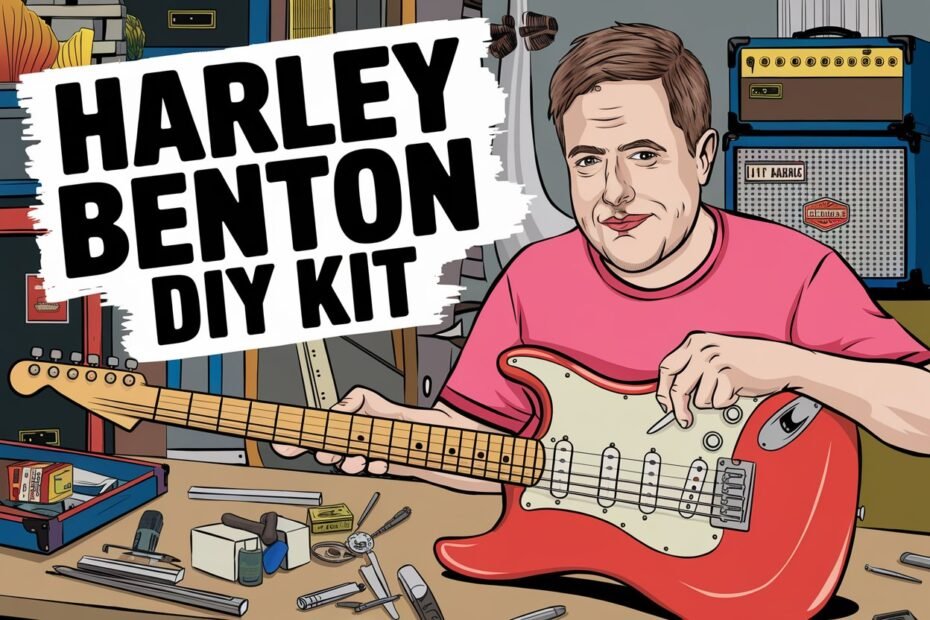So, you’ve decided to build your own guitar, huh? Maybe it’s a personal challenge, maybe it’s the allure of creating your own custom axe, or maybe you’re just tired of spending all your money on gear.
Whatever the reason, the Harley Benton DIY Kit might just be what you’re looking for.
Here are five best things I found when I build my own Stratocaster 😉 You can watch my short video below.
1. Complete Control Over Your Sound and Style
Okay, straight off the bat, one of the most amazing things about this DIY kit is that you have complete control over everything. Seriously, want to give it a crazy neon paint job that makes people think they’re in a ’90s video game?
Go for it. Prefer something more classic and subdued? That’s all you. This is your chance to be both a luthier and an artist, and it’s absolutely satisfying to see your creation come to life.

I went with a natural wood finish on mine because, y’know, nothing says, „I did this myself” like some exposed wood grain and a finish that’s, well, maybe a little less perfect than the factory job. But it turns out, I love it that way.
The Rengas body has a cool character that changes slightly depending on the lighting, and yeah, you notice the „wood color may vary” thing, but that just makes it unique, right? Plus, the maple neck and amaranth fretboard add some nice visual contrast—not to mention a classic, comfortable feel.
And yes, I sanded the neck down to feel like butter. Because if you’re building it, might as well get picky!
By the way, although I bought the ST-kit, there are a lot of other kits available too. Have a look at these!
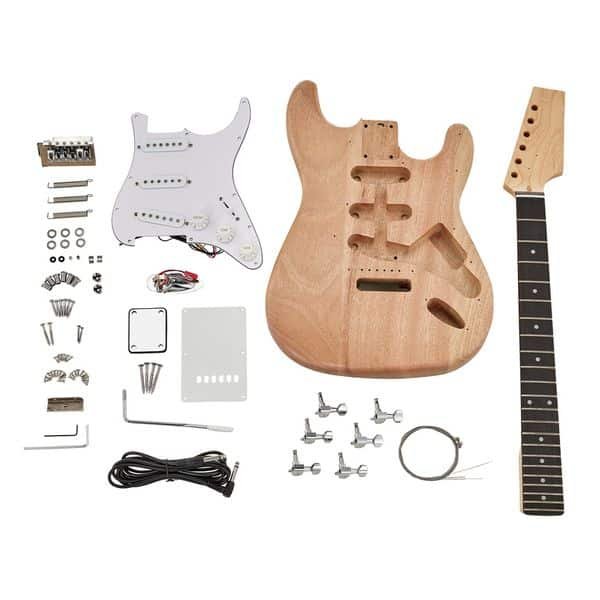 ST Style Kit | Read Reviews on Thomann |
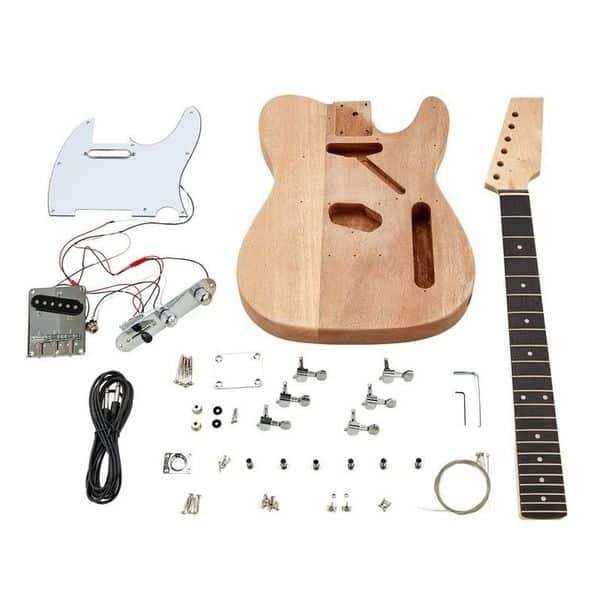 T Style Kit | Read Reviews on Thomann |
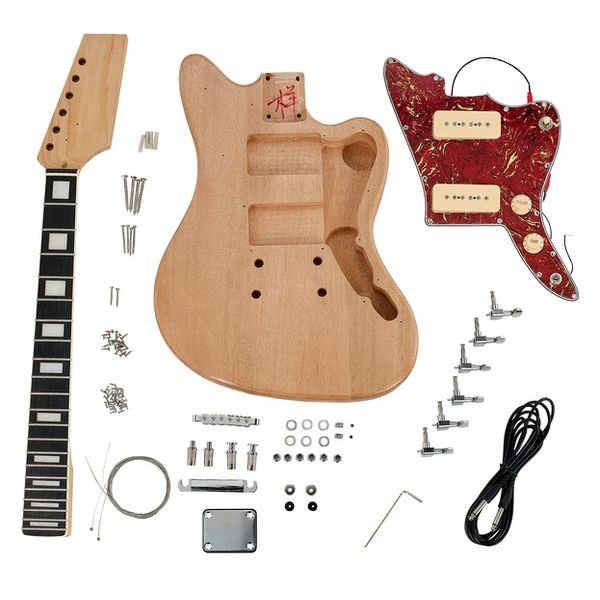 Jazzmaster Kit | Read Reviews on Thomann |
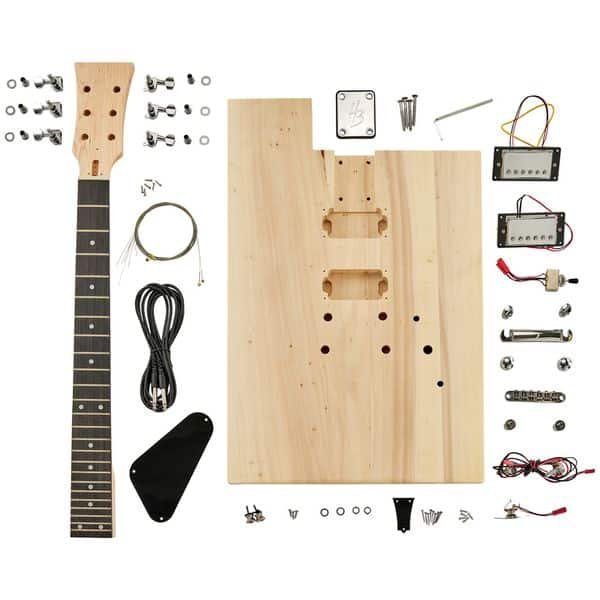 Square Kit | Read Reviews on Thomann |
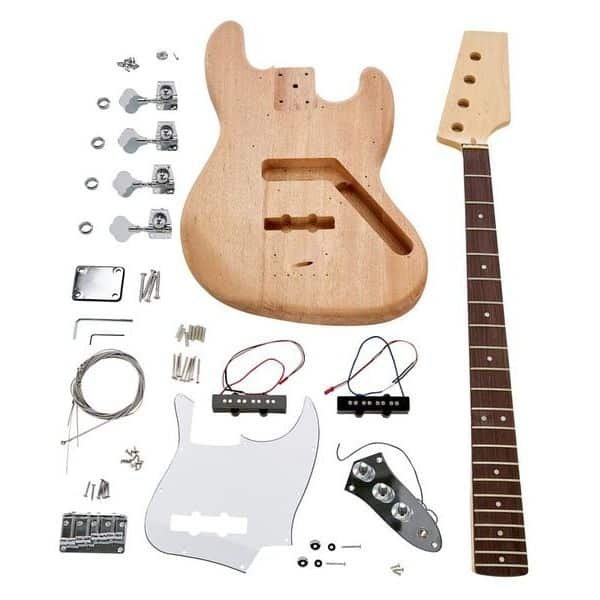 Bass J Style Kit | Read Reviews on Thomann |
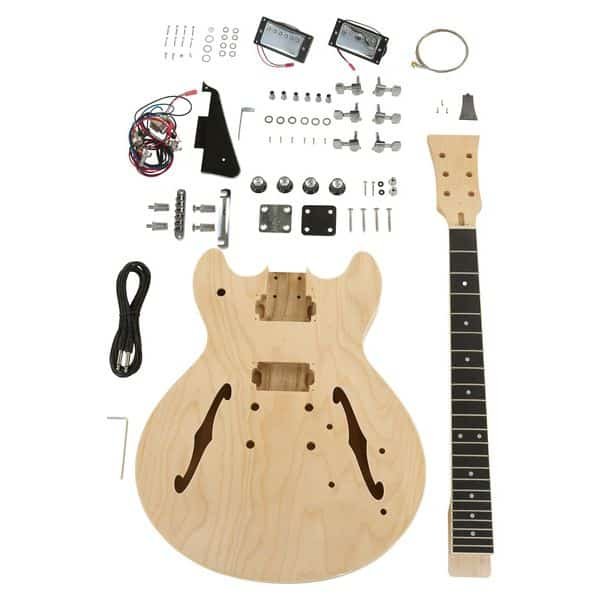 HB-35 ES335 Copy Kit | Read Reviews on Thomann |
2. It Actually Plays… Pretty Well!
Alright, real talk here: when I first got this kit, I didn’t exactly have high expectations for how it would play. I mean, this thing costs less than a fancy date night dinner. But hey, Harley Benton surprised me.
You can watch the quick sound sample below.
Once you bolt the neck on, install the die-cast machine heads, and slap those .009 – .042 strings on, you’ve actually got yourself a legit guitar.
Don’t get me wrong, this isn’t going to be like strumming on a custom shop Fender, but it doesn’t have to be. After a bit of fiddling with the double-action truss rod (yeah, it’s got one of those!) and getting the action just right, it played smoothly.
The fretboard radius is 12 inches, which feels super comfortable for both chords and bends. The 22 frets were decently level out of the box, but hey—if you’re feeling ambitious, a fret dress would make it even better.
And those three ceramic single-coil pickups?

They’ve got that classic Strat spank—they’re not the hottest pickups out there, but they give you plenty of jangle. 5-way switch, 2 tone knobs, and a volume control give you more than enough versatility.
And let’s be real, you’re not getting this kit for the pickups—you’re getting it for the joy of putting it together and making it your own. And IMO, it delivers!
3. You’ll Learn a Lot (Like, A Lot)
Remember when I said this is a journey? Yeah, that was no understatement. Building this guitar is like a crash course in basic guitar maintenance and assembly. I mean, have you ever installed a tremolo bridge before?

No? Well, I hadn’t either, and now I know just enough to be dangerous. But seriously, figuring out how to set the springs just right so that the bridge doesn’t sit at a weird angle was way more satisfying than I thought it’d be.
If you’ve ever been afraid to adjust your guitar’s truss rod, assembling this will cure that fear. The „double-action” truss rod makes neck adjustments way easier, and once you’ve tweaked it yourself, you’ll never be scared to do it again.
You also learn about intonation, action, and wiring—like, yeah, you’re going to have to solder some stuff, but don’t freak out. If I can do it, so can you. It’s actually a great way to demystify the whole idea of electric guitars being these fragile, unknowable objects.
They’re not—they’re just wood, wire, and metal, and you get to mess around with all of it.
4. It’s Cheap (But in a Good Way)
Let’s get real here: Harley Benton DIY Kits are super affordable. I’m talking a price that makes you wonder how they even pull it off. And while the materials aren’t what you’d get on a pro-level guitar, they’re solid enough that you’re not getting some piece of junk that’ll fall apart on you in a week.
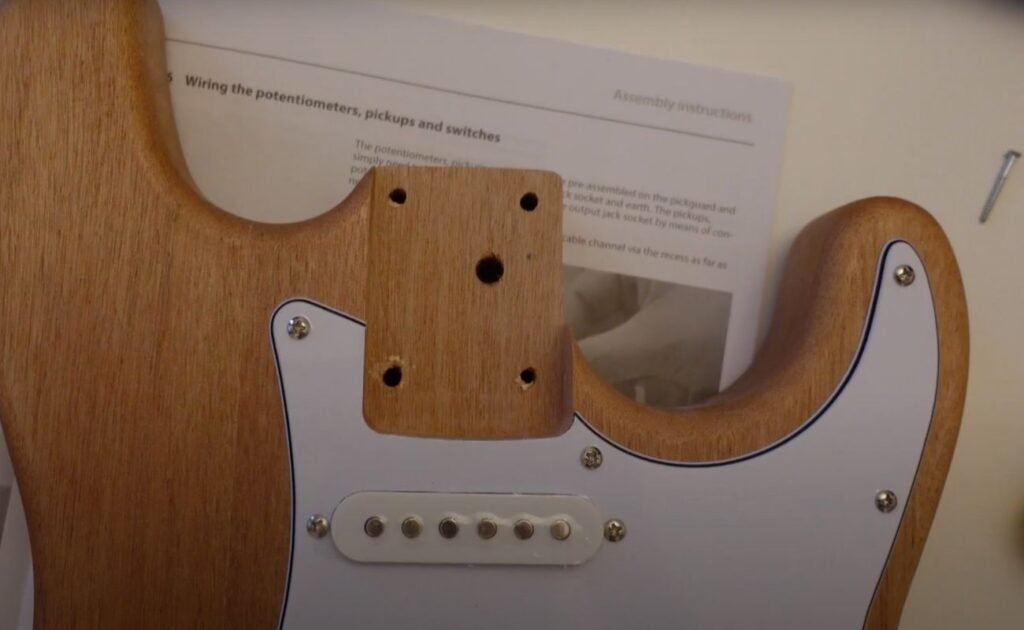
The hardware is basic, sure, but it does the job. The tuners hold tune, the tremolo works well enough (though, yeah, maybe keep those dive bombs to a minimum if you want it to stay in tune), and the electronics are surprisingly okay.
If you want to mod it later—throw in some hotter pickups, maybe upgrade the pots—you totally can. And let’s not forget, that’s part of the fun. Starting cheap gives you the room to customize it into your own little Franken-guitar.
You’re getting a lot of bang for your buck here.
5. The Satisfaction of Doing It Yourself
This one might sound a bit corny, but it’s true: there’s nothing quite like playing a guitar that you built yourself.

And look, I paid around 80 EUR for this stuff. And I had A LOT of fun while assembling it.
Even if it’s not the most perfect guitar in the world (spoiler alert: it won’t be), every little imperfection is a reminder that you made it.
The scratches from sanding, the bit of stain that went slightly darker than intended, the tiny finish flaws—these all make it yours.
The first time I plugged it in and strummed a chord, I think I half expected it to burst into flames or fall apart in my hands. But when it didn’t (and it actually sounded good), I had this weird little moment of pride.
I made this thing, and it works. I mean, how cool is that? If you’ve got the patience and the curiosity, it’s worth every second of the build.
FAQ: Harley Benton DIY Kits
Do I Need to Be a Guitar Tech to Assemble This?
Nope, not at all. You do need some basic tools (like a screwdriver, a soldering iron, and sandpaper), but you don’t need to be a pro. The instructions are easy enough to follow, and there are plenty of YouTube videos out there if you get stuck. I mean, if I can do it without setting my house on fire, you’re probably good. 😉 Otherwise, you can always check out other Harley Benton guitars.
What If I Screw It Up?
Hey, that’s part of the fun! Joking aside, there’s not much you can do that’s totally unfixable. Worst case, you need to re-solder something or adjust a part that isn’t fitting right. Mistakes are just learning opportunities, right? Plus, the fact that it’s a DIY kit means you’re not ruining an expensive guitar—you can afford to take some risks here.
How Does It Compare to an Off-the-Shelf Guitar?
Honestly? It’s not going to be as polished or precise as a guitar made by a factory full of machines. But that’s not why you buy this. You’re buying it to learn, to experiment, and to end up with something uniquely yours. And in that sense, it’s better than an off-the-shelf guitar. Plus, it actually plays decently well once you’ve got it set up.
Can I Upgrade It Later?
Absolutely. The bones of the guitar—the neck, body, and general fit—are good enough that it’s totally worth upgrading things like the pickups or the hardware if you want to. It’s a great base for experimentation, so if you ever wanted to try different pickups or change the bridge, go for it.
Final Thoughts

Look, the Harley Benton DIY Kit isn’t perfect. The wood isn’t AAA grade, the pickups are basic, and yeah, you’re going to spend more time with sandpaper than you probably imagined.
But it’s a whole lot of fun, and you end up with a guitar that’s undeniably yours. If you’ve ever wondered what goes into making a guitar, or if you just want something a little different, this is a perfect weekend project.
Besides, when someone asks, „Hey, where’d you get that guitar?” you get to say, „I built it myself.” And let’s be real, that’s just plain cool.
